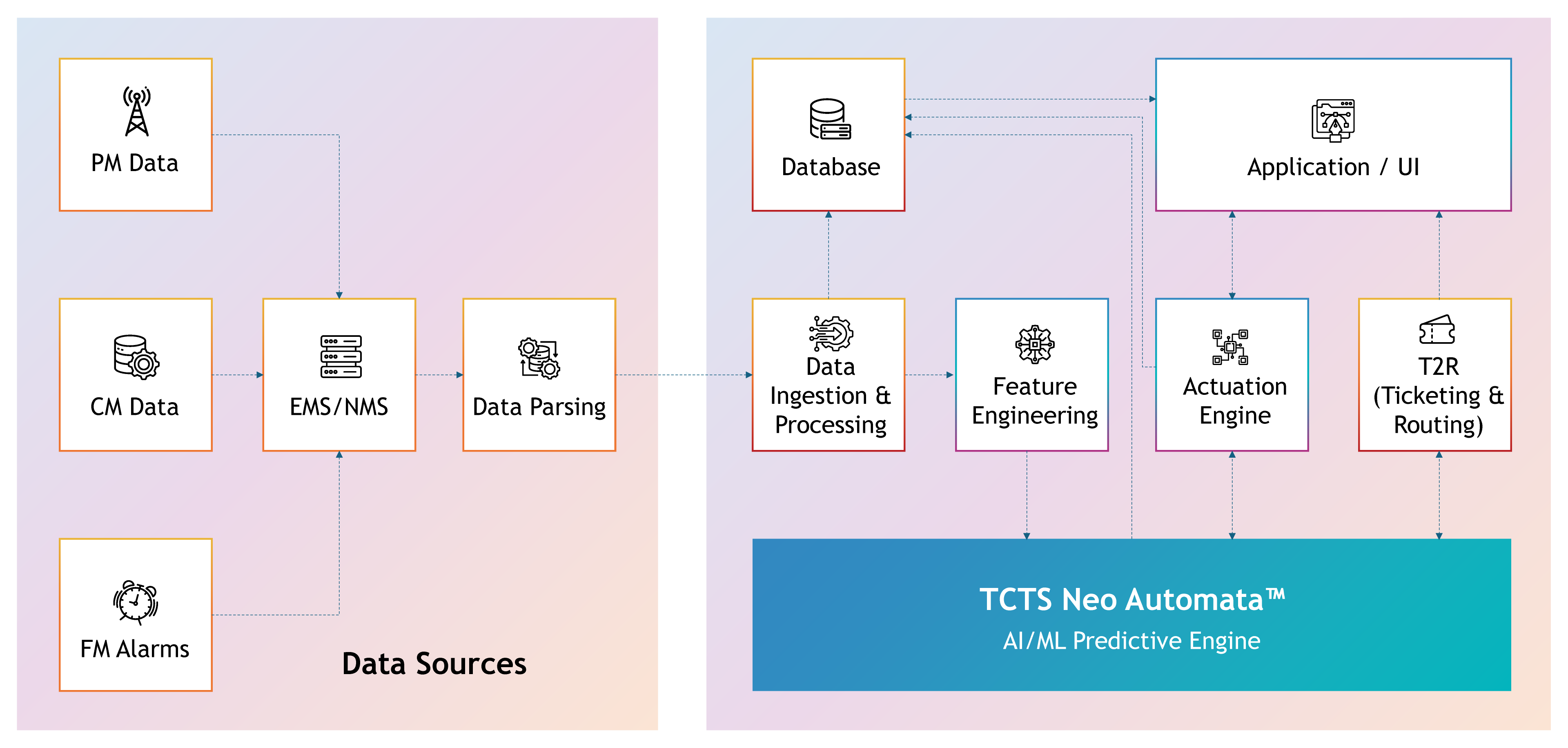Overview
Staying ahead of network anomalies means embracing AI-driven precision and automation. Our AI/ML-powered Traffic Anomaly Detection approach transforms how Communication Service Providers (CSPs) and Network Operators monitor and maintain Radio Access Networks (RAN). By leveraging advanced machine learning models and rule-based logic, this solution identifies and predicts traffic anomalies—such as partial cell failures or sudden demand surges—well in advance, enabling proactive network optimization and fault mitigation.
Challenge
Telecom networks are increasingly complex and sensitive to fluctuations in traffic patterns. Anomalies caused by equipment malfunctions, RF interference, or mobility-driven demand spikes can degrade user experience through slow data speeds, dropped connections, and service outages. Traditional monitoring systems often detect issues reactively, leading to prolonged Mean Time to Repair (MTTR) and inconsistent Quality of Service (QoS).
Solution
Our hybrid anomaly detection framework combines:
- Real-time KPI Drift Analysis: Monitoring metrics like PRB utilization, RRC/RACH failures, handover success ratios, and user mobility trends.
- AI/ML Models + Rule-Based Logic: Capturing both abrupt and gradual deviations in traffic behaviour.
- Multi-source Data Integration: Leveraging OSS platforms, PM counters, UE trace logs, and neighbour cell reports.

Fig – TCTS Neo Automata™ for ML-Based Traffic Anomaly Detection
(This architecture uses ML models trained on historical PM data to detect traffic anomalies, triggering real-time alerts and corrective actions via the actuation engine)
Once an anomaly is confirmed, the system initiates automated corrective actions:
- Short-Term Adjustments: PRB reshuffling, handover optimization, and tuning of TTT/A3/A5 parameters.
- Persistent Issue Resolution: Sector resets, interference mitigation, and PCI/RS configuration checks.
The framework also incorporates feedback learning, refining detection accuracy using post-resolution KPI deltas.
Key Benefits
- Proactive Detection: Identifies traffic dips and spikes hours in advance.
- Automated Correlation: Links anomalies to hardware, RF, and interference patterns.
- Accelerated Fault Localization: AI-generated anomaly signatures streamline root cause analysis.
- Reduced MTTR: Auto-corrective actions minimize downtime and manual intervention.
- Enhanced QoS: Maintains service consistency in high-load and mobility-sensitive clusters.
This solution enables CSPs and network operators to transition from reactive troubleshooting to predictive network management. By embedding intelligence into anomaly detection and resolution, the solution ensures resilient, high-performing networks that adapt to evolving user demands.





